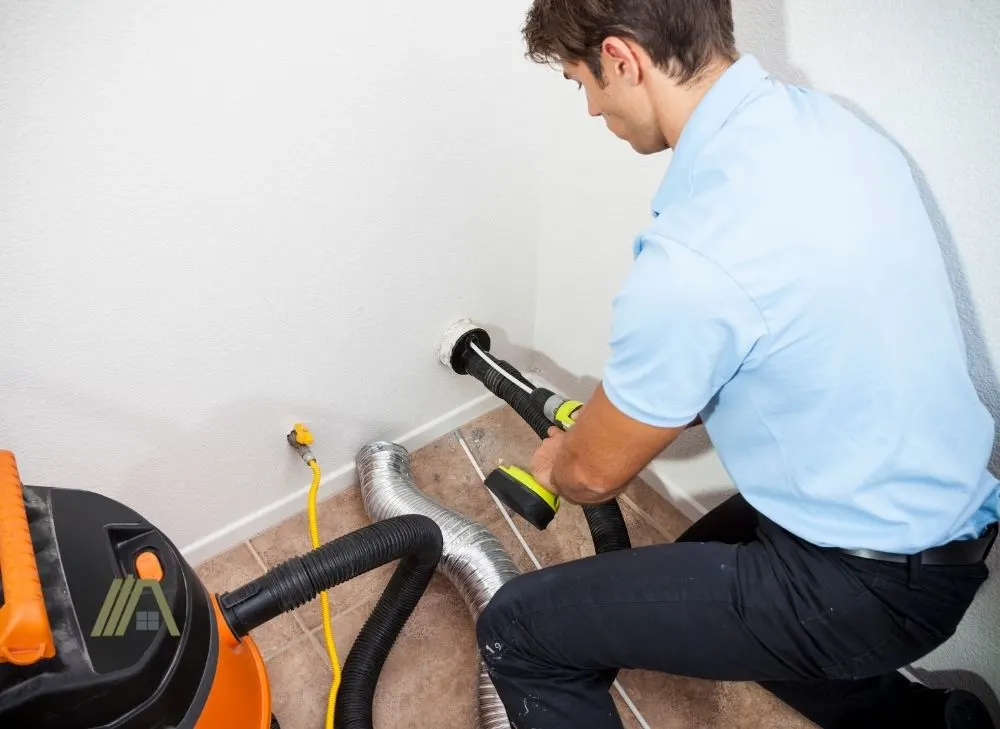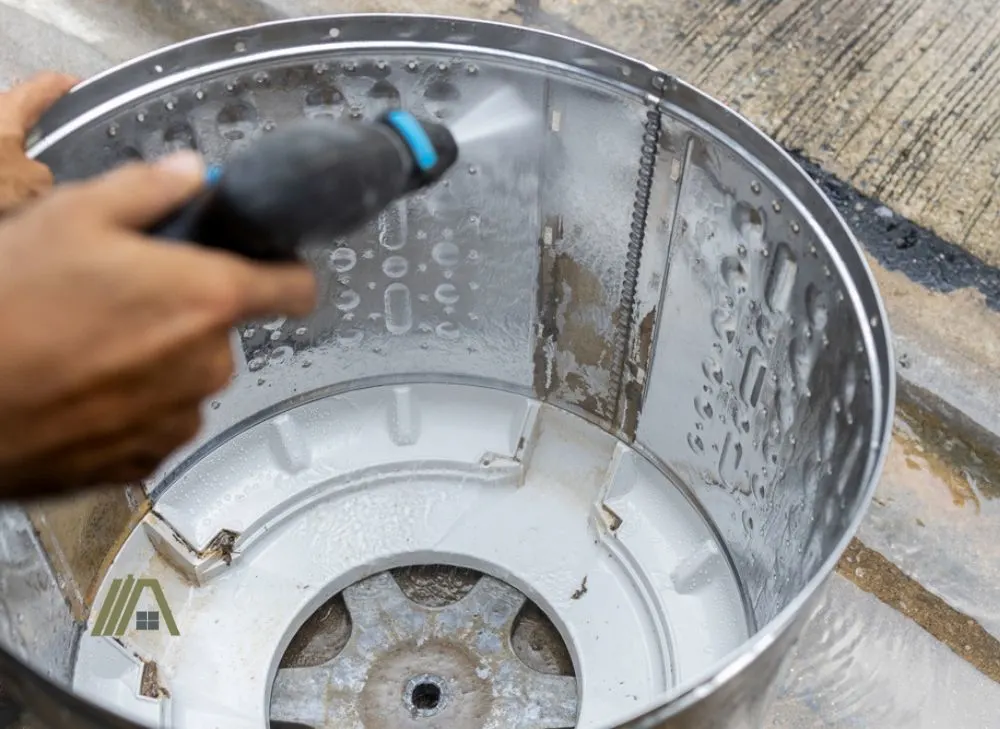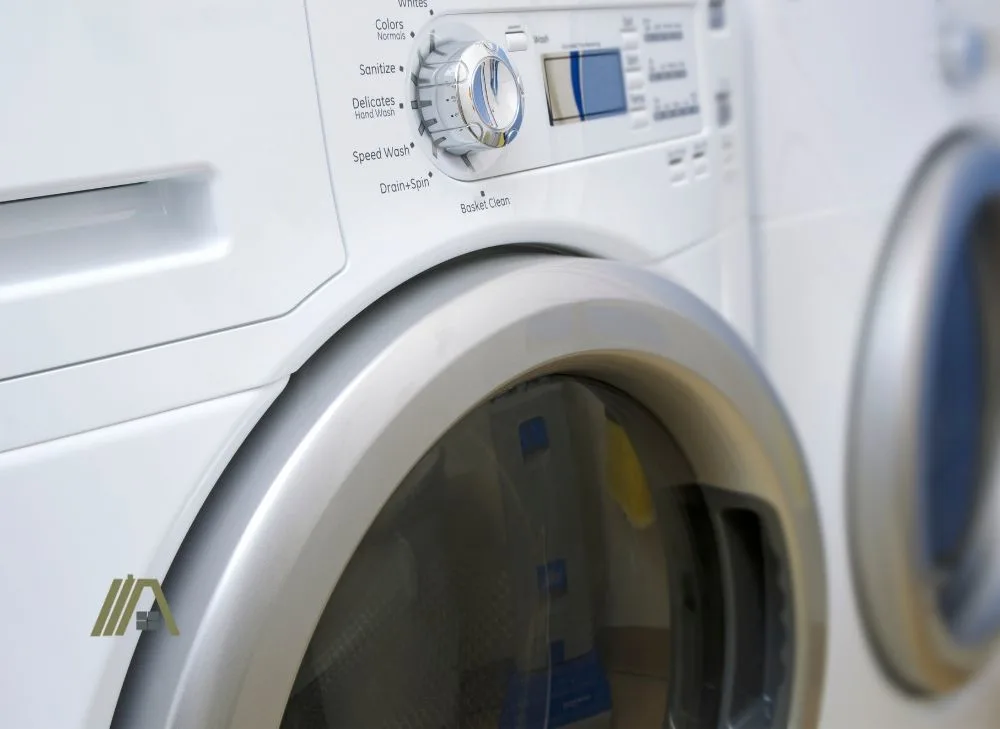With more and more people living in smaller spaces, indoor dryer vents are becoming more popular as they are quite easy to install. With a variety of cost-effective options, these kits seem like the obvious solution to your dryer needs.
Yet, however much they may be useful to you and your family, indoor dryer vent kits come with a range of different problems that can affect not only your health but also the integrity of your home.

Indoor dryer vent kits do nothing to remove the moisture exhausted from dryers. This means that all the water that was in the washing ends up as steam and then condensation in the laundry and surrounding rooms. This causes moisture problems like mold, wet electrics, rotting materials, and structural damage.
The Purpose of Dryer Venting
Dryer ventilation is supposed to remove the excess heat produced by the dryer cycle as well as the water collected from the clothing. This is to prevent heat- and moisture-related damage and poor air quality inside the home.

In most cases, an outdoor vent is installed directly into a wall leading outside of the house, but others vent dryers up through the attic (not into!) and out the roof. This is to allow for this excess heat and moisture to be expelled outdoors, where it doesn’t cause any issues.
However, there are cases where this is not possible. Perhaps you are renting and can’t make structural changes to your home, or perhaps the only space you can put your dryer in is in a room in the middle of the house.
This is when many people start to consider something like an indoor dryer vent kit or a condenser box. But these kinds of systems are not actually providing the required ventilation.
Indoor Dryer Vent Kits Only Catch Lint
Indoor dryer vent kits are actually only designed to catch the lint expelled from the dryer through either a water reservoir or a mesh filter.
Indoor dryer vent kits that use a water reservoir need to be emptied frequently. If left too long, the water will evaporate as a result of the exposure to hot dryer air, and it will no longer effectively trap the lint. Furthermore, any lint that has already been collected, can be blown into the room when it is no longer weighed down by the water.
Dryer kits that use a mesh filter also need to be cleaned or even replaced regularly. The mesh can become clogged with lint (that’s the whole point of it). But when it is too full, then the air blowing against it can just dislodge the outer layer of lint and set them free inside the room.
Additionally, heat will build up behind the filter and there is a risk of the clogged filter igniting.
These kits do not do anything to remove the moist, hot air from your laundry room as they are blowing straight into the space and not outside it.
Please note that the manufacturers of these kits warn against their use with gas dryers. Gas dryers cannot use an indoor dryer vent, as it would lead to the release of carbon monoxide and ultimately carbon monoxide poisoning.

While lint collection may be useful and the indoor dryer vent kits can perform this function relatively well, they do not stop the moisture and heat from getting into the room.
Water from Dryer Is Released Into the Room
Dryers work by heating room temperature air using an electrical element (remember, we are not even going to consider indoor vent kits with gas dryers). This air is then used to dry your clothing while it is being tumbled inside the drum.
As the heated air is blown through the drum, it removes and collects water from the clothes. The combination of this heat with the water creates moist, hot air that needs to be exhausted outside.
If it is exhausted into an indoor dryer vent, then the air escapes into the room without any of the water being removed. This leads to moisture being released into the room, which causes myriad issues that we will discuss in a moment.
Reservoir Models Add Water into the Air
As mentioned above, some indoor dryer vent kits require a reservoir to be filled with water to catch the lint contained in the dryer exhaust.
While blowing the air into a container filled with water helps to catch and remove lint, it also means that the water is exposed to hot air. What happens when water is exposed to hot air? It evaporates.
As I have already mentioned, this reduces the effectiveness of the indoor vent. But in addition to this, the evaporated water simply increases the level of humidity in the room and worsens all the problems linked to excess moisture indoors.
Moisture Problems Linked to Indoor Dryer Vent
The increase of humidity in your laundry room due to the indoor dryer vent kit can cause a range of different problems.
1. Mold
The accumulation of water on the surfaces in the room can create the perfect breeding ground for mold to grow.

Mold is unsightly and can be a serious health risk and can cause a range of different allergies in children and adults alike. Additionally, it can also affect the structural integrity of the surfaces on which it grow.
2. Home Structure
Humidity and moisture can also dampen building materials like wood and drywall. This can lead to rot and the breakdown in the structure of your home, which can become very unsafe very quickly.
3. Electrics Don’t Like Moisture
Would you ever consider installing a television in your bathroom? What about a nice electric heater? It’s not likely, is it? This is because we all know that moisture, such as the steam produced by hot showers, is really bad for electrical equipment.
If you vent your dryer using an indoor vent kit, then your laundry room and the rooms adjoining it can become just as steamy as a bathroom.
This is damaging to your electronic devices and a potential shock and fire hazard.
4. Increases the Drying Time of Your Clothes
If there is too much moisture in the room, that means the dryer has to work twice as hard as it should to make the clothes dry, which is the very opposite of what you needed the dryer for.
This is because the air being pulled into the dryer to dry the clothes will be increasingly humid and capable of removing less water from the clothing before being saturated.
5. Air Pollutants
By venting your dryer into your home, you are increasing the risk of dangerous chemicals coming from the cleaning detergents being released into the room.
6. Increased AC Bills
One of the secondary attractions of these in the dryer vents is supposedly the money you save on heating your house. But if you just take one moment to consider the matter, you will realize that all the money you save in winter, and possibly more, will be lost in summer when you have to cool down a house that is constantly having hot air pumped into it.
The alternative is to not use your dryer in the summer. What is the point of a convenience machine that can only be used under certain conditions?
Indoor Dryer Vent Kits Are Against Code
The IRC is applicable in most states but can sometimes be adjusted within the local area building codes. Therefore, it is vital you check your local building codes before installing your dryer.
Nevertheless, according to Section M1502.3 of the IRC:
“Exhaust ducts shall terminate on the outside of the building.”
This means that the use of an indoor dryer vent is prohibited.
This is not only due to the possible health risks associated with humidity but also the structural integrity of your home.
Issues Arising From Code Violations
Violating building codes is not only against regulations but also endangers the health and safety of current and future homeowners. Below are a few issues that can arise from code violations.
- Fines – Contravening the building codes can lead to fines of up to $750 in some states!
- Forced duct installation – If the home inspector were to find your appliance installed incorrectly (and causing the possible endangerment of your family or neighbors), they could have you reinstall the dryer with an outdoor vent system.
- Insurance troubles – If your house violates the building codes, then your homeowners’ insurance is compromised. Most insurance policies are dependent on the house being up to code. If your house were to have water damage or mold due to the moisture and humidity from your dryer, the insurance would most likely not pay for any repairs or replacements. This will leave you out of pocket once again.
- Selling your home is harder – If you plan on selling your home in the future, you will need to take part in a home inspection. Once again, if your home is not up to code, you will need to ensure that it is fixed up to code before the transfer of your sale.
If an outdoor dryer vent is not possible, perhaps have a look at a ventless dryer as another option. They don’t require vents (obviously), but they do not have a significant impact on the moisture levels in a room.

Sources
https://www.ag.ndsu.edu/news/newsreleases/2008/feb-7-2008/don2019t-vent-dryer-into-home
https://www.interiorsplace.com/are-indoor-dryer-vents-safe-what-you-need-to-know/
